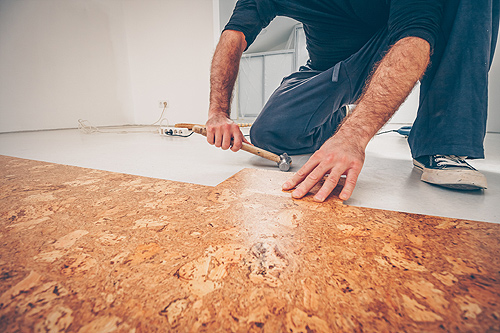Cork: The Best Eco-Friendly and Sustainable Building Material
While it has been used as a building material for centuries, cork isn’t usually the first choice for modern builders. That’s all about to change, however.
Cork is a natural, eco-friendly, and sustainable building material with a variety of applications and many benefits. According to a builder in Olympia, Washington who used cork to cover his house,
“Working with cork doesn’t leave you itching and scratching. It doesn’t leave the job site covered in foam particles. There are no endocrine damaging fire retardants. It doesn’t compress like mineral wool, so there are no tedious screws to move in or out to keep a wall plane straight. It comes in packs that are easy to lift and carry, and panels that are easy to apply and can be nailed in place with a nail gun.”
Clearly, building with cork has its perks. If you’re interested in incorporating cork into your next build, read on for everything you should know.
Cork has many building applications
Cork is versatile. As a building material, it’s most often used as flooring. Other uses include:
- Countertops
- Rigid insulation
- Acoustic wall coverings
- Exterior surfaces, including roofs and siding
Cork is a fantastic building material
The properties of cork mean that this material is:
- Lightweight
- Flexible
- Elastic and resilient (returning to its original shape after being compressed)
- Impermeable to liquids and gases (it won’t rot)
- Thermally and acoustically insulating
- Fire retardant
- Resistant to wear
- Hypoallergenic
Cork is easy for builders to work with
Soft, easy to cut and lightweight, it’s easy to see why working with cork is a breeze for builders and contractors. Compared to traditional building materials like heavy asphalt shingles and fragile kitchen and bathroom tiles, cork is the clear winner.
Cork is a sustainable building material
Harvesting cork doesn’t require cutting down the tree. Instead, the bark is stripped every 9 years. Because of cork’s unique cell structure, it also stores carbon. If you’re able to source recycled cork, it’s one of the best ways to be an eco-friendly home builder.
Shipping costs will surprise you
Like any material, there are pros and cons to working with cork. One of the most-often cited disadvantages is shipping, since cork oak trees grow in the Mediterranean. More specifically, cork is a top export of Portugal.
Despite high shipping costs, the number of residential home builders who think the benefits outweigh any drawbacks is growing. Cork is a renewable resource that’s incredibly easy to use in builds. The environmental impact of harvesting cork is small, even when transatlantic ocean shipping is considered. It has properties that make it excellent for building, including a surprising variety of potential uses. Before your next build, you may want to ask your suppliers about sourcing cork.
Learn how you can protect your business and add valuable selling points to your new builds with 2-10 Structural Warranties.








